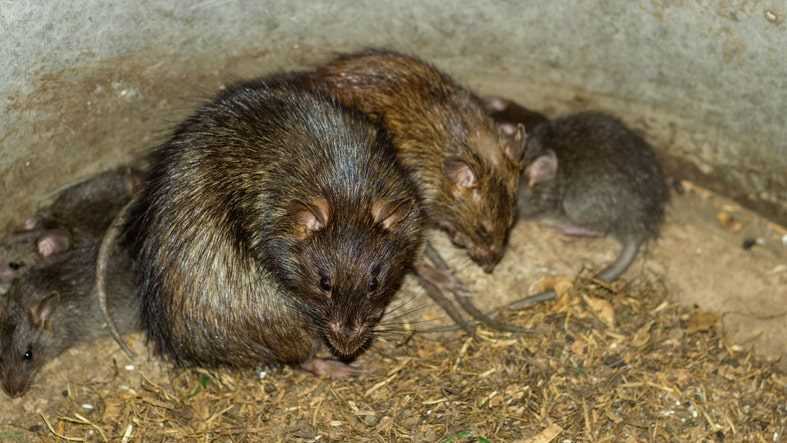Rats. You might get the shivers just thinking about these creatures. And thinking of having an infestation in your home or business might send you packing.
Keep reading to find out the early signs of a rat infestation and how your friends at PURCOR can help with all your rodent removal needs. For immediate assistance with a growing rat issue, reach out to our rodent control specialists.
Rats are Drawn to Accessible Resources
First, food and water. Most rodents don’t have a stable source of food, so they are always on the lookout for a tasty treat or a few drops of water. Make sure you secure leftover food and sweep up crumbs. Rats will even eat pet food so seal up your cat or dog’s food tightly.
Next, shelter. Piles of clutter make a perfectly safe and warm spot for rats to set up their shelter. Places like crowded crawlspaces, messy basements, or packed attics are ideal for rats to make nests away from predators but close to food and water.
Make sure these areas remain tidy and pay attention to any signs that might indicate a rat has taken up shelter here. But what turns the discovery of one rat in your home into an infestation? The simple answer is that rats reproduce at extremely high rates.
How often do rats reproduce?
One female Norway rat, or brown rat, can produce five litters of baby rats every year. Each litter of rats can have around 14 pups. Those pups can begin mating just five weeks after they are born, and a female rat is fertile every three weeks.
The gestational time for a rat is about three weeks, so in just around two months, a pair of mated rats could produce close to two hundred more rats.
Some estimate that a pair of rats could produce half a billion descendants in three years if left unchecked. Though the reality of this happening is very low. Food and water scarcity as well as limited shelter and natural predators will prevent this. However, even having just a few generations of rats in your home is a problem.
Signs of a Rat Infestation
While contacting pest control specialists to identify signs of a rat infestation is your safest option, being educated about these pests. Common signs of a growing rat infestation in your home include:
- Rodent droppings in your kitchen around drawers, under sinks, or in cupboards
- Chewed or torn food packaging and boxes
- Scratching noises in your walls
- Grease marks along baseboards where mice’s oily fur has touched them
Stop Rats in Their Tracks with PURCOR
Rats carry diseases like salmonella, HPV, hantavirus, and more. The bottom line is that you don’t want a rat infestation breeding in your home or business. However, if you suspect one might be taking place, contact PURCOR right away.
Our team is knowledgeable and experienced in handling all kinds of pests. Our professional service specialists will treat your home well and make sure you and your loved ones are the only residents living there. Request a free rodent control estimate today.
"*" indicates required fields
"*" indicates required fields




